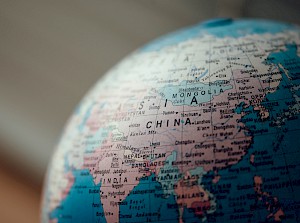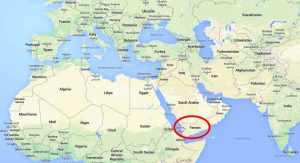If we could unify quantum mechanics with general relativity, it would change everything. That’s the modest goal of the newly-launched Quantum Gravity Institute
August 02, 2022Originally published in The Toronto Star on July 19, 2022 as contributing columnist
Launching the Quantum Gravity Institute in Vancouver
“When forced to summarize the general theory of relativity in one sentence: Time and space and gravitation have no separate existence from matter. If (quantum theory) is correct, it signifies the end of physics as a science.”
Albert Einstein
I barely took any science classes in high school, never mind physics.
In fact, I was so disinterested in school, I’m not sure how I ever graduated. Four decades later someone gifted me the book, “The Fabric of the Cosmos”, by Brian Greene. I was hooked. I went on to read many other books on the subject on a journey down a deep rabbit hole.
The more I learned, the more questions I had. Eventually, I met Brian Greene who is world-renowned for his groundbreaking discoveries in the field of superstring theory. I went on to meet Paul Steinhardt who is currently the Albert Einstein Professor in Science at Princeton University and best known for his development of new theories of the origin, evolution, and future of the universe.
I started writing articles on my blog on the subject and would enjoy torturing my dinner guests with endless dissertations on the weirdness of quantum behaviour, the Big Bang and black holes. It may sound like very heady stuff that is only important to eggheads in white coats, but these theories have very real-world applications.
Quantum mechanics (QM) — the theory of matter and fields — and Einstein’s theory of general relativity (GR) — the theory of space, time, and gravity — are the odd couple of physics. Each theory has revolutionized our understanding of nature, and both work perfectly, making incredible predictions that have been verified again and again over the past 100 years.
One theory explains the very small and the other the very big. There is one small problem, though, in that they are seriously incompatible. In fact, they are practically antagonistic. We are stuck with two perfect theories that generate garbage results when combined. Think of it like trying to overlay a beautiful Mozart concerto with a Miles Davis jazz improvisation piece. It literally makes a physicist’s head hurt.
Consider the importance of this paradox. Our understanding of GR and more importantly, QM, have been responsible for almost all the technologies that run our world today. Practically everything. Without QM, we would not have semiconductors and transistors. All we would be left with is crude electromagnetic devices, petrol engines, and primitive aviation. We would drive primitive cars, have no chemical industry, no food industry, no modern agriculture, primitive medical treatments, no plastics, no electronics as we know it, no space travel, no efficient LED’s, no lasers, no MRI’s — the list is endless.
And without GR, we would not have atomic clocks that allow for a functioning GPS system. Additionally, GR has given us an amazing and deep understanding of the cosmos. Indeed, the word “universe” would be devoid of any meaning without GR.
So, why is it important to reconcile these two theories? Well, because it would change everything, and I mean EVERYTHING! How exactly, we can only speculate. We truthfully don’t know. Much like 100 years ago, we had no idea how the wacky behaviour of QM would herald in the 20th century technologies that have transformed our lives.
But before we can speculate, we first need to remove the existing roadblock of incompatibility between the two theories. Depending on which theory prevails, (or the creation of a new theory) it could impact our understanding of time or present new ways of controlling gravity, or advancements in quantum computing and perhaps advance nuclear fusion which would provide an almost endless source of clean energy. Beyond possible technological advances, a quantum gravity theory might answer the elusive questions about the beginning of our universe.
A few years ago, I met Vancouver businessman and physics enthusiast, Paul Lee. Paul, who is also chairman of Vancouver-based quantum computing company, D-Wave, shared my love of the subject and introduced me to a like-minded group, including Terry Hui, Moe Kermani, and Markus Frind. Incidentally, with this group I honestly feel like the dumbest person in the room.
Paul had been in conversations with Philip Stamp, (a professor in the department of physics and astronomy at UBC and a long-term visiting associate in theoretical astrophysics at Caltech), who in turn had been working with Nobel Physics laureate, Sir Roger Penrose about creating a Vancouver-based institute that would house 40 years of archives that featured interviews with some of the world’s top theoretical physicists. Our conversations led us to create a society and the creation of a research institute that would not only house the archives, but also address the subject of Quantum Gravity. I was thrilled to meet Sir Roger, as I had previously read his book, “The Emperor’s New Mind.”
Two years after these conversations started, we are finally launching our Quantum Gravity Institute (QGI) at our first five-day conference from Aug. 15-19. Vancouver’s Quantum Gravity Society has been created to enable the world’s top minds in physics to unify these approaches into one Theory of Quantum Gravity. Furthermore, the Society wants to make sure that this revolution happens at the conference in Vancouver.
The public day on Aug. 17 will feature TED-style talks featuring a Dream Team of the world’s preeminent physicists, including Nobel Prize winners Jim Peebles, Sir Roger Penrose, and Kip Thorne along with Martin Rees (Baron Rees of Ludlow), Markus Aspelmeyer, Viatcheslav Mukhanov, and Paul Steinhardt.
In addition to advancing the theoretical side of quantum gravity, the QGI will support the more important aspect of this science, of proving or disproving the theories. This is now possible due to a dramatic change which has occurred, in that experiments and observations capable of opening up this new world are becoming possible, both in ordinary physics labs and using new astronomical tools.
Resolving this paradox may or may not happen in our lifetimes. But wouldn’t it be great to help advance the work of what could be the greatest achievement in the history of science? And even better, that Canada played a role?










